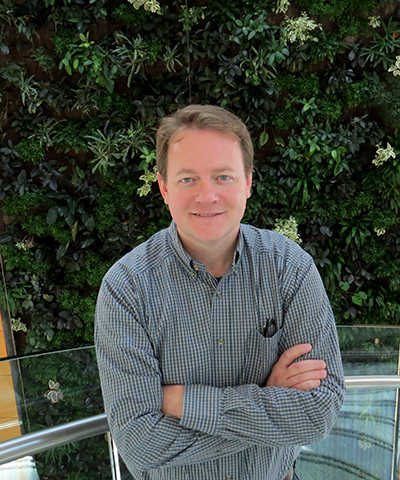Research Update: Q&A with Cell Biologist Ryan Petrie, PhD
September 24, 2018
Ryan Petrie, PhD, is an assistant professor of biology in Drexel’s College of Arts and Sciences. He was recently awarded a $323,429 grant from the National Institutes of Health for his project “Physical Mechanisms of 3D Cell Motility.”
 Ryan Petrie, PhD
Ryan Petrie, PhD
Describe your current research project.
My team is intensely interested in understanding how single cells move in the human body. Since human tissues are complex, 3D structures, we use a combination of in vitro models of 3D tissue and high-resolution microscopy to capture the cellular and molecular dynamics that drive cell movement.
Fascinatingly, human cells are quite adaptable in response to their physical environment. We discovered a mechanism of cell migration where cells use their muscle-like contractile cytoskeleton to generate intracellular pressure to squeeze their leading edge forward like a tube of toothpaste. A major focus of the lab is to now unravel this novel mechanism and understand how it works at the molecular level.
Why does this research matter to your field? To other fields?
Cell biologists have been studying how cells move since the invention of the light microscope. It was only recently appreciated that individual cells have more than one way to move. Our research will not only help us understand the high-pressure migration mechanism we discovered, but it will also help to reveal what causes cells to switch from one migration mechanism to another. Establishing the rules of the road has the potential to apply other fields where cell migration is important, such as developmental biology, immunology, and cancer biology.
What are some potential applications of this research?
Single cell movement is a critical component of normal processes like wound healing, as well as a major factor leading to the metastasis of tumor cells. While we are mainly interested in the fundamental mechanisms driving cell movement in 3D tissues, being able to therapeutically control cell movement has enormous implications for human health.
Promoting the movement of skin cells known as fibroblasts may help persistent wounds to heal, such as in diabetic patients or the elderly. Conversely, slowing or stopping the movement of malignant cells would help reduce cancer metastasis and help prolong the life of cancer patients.
Has anything exciting or surprising come out of the research so far?
Our most recent work has revealed that a single human cell actually has two distinct force-generating systems. One is used to contract the cell to increase intracellular pressure and inflate it like a balloon, while the other is responsible for pulling on the extracellular environment to help move the cell forward. It now seems that single cells have functionally unique intracellular muscles, despite being the width of a human hair. What is amazing is that there are likely many more unique force-generating mechanisms left to uncover!
Are students involved in the project? Are there opportunities for students to get involved?
My lab would not exist without enthusiastic Drexel undergraduate and graduate students moving the research forward. We are constantly searching for the next generation of Petrie lab members who can dedicate 10 hours per week to bench research and help us get the answers to our questions!
Do you have any advice for students who aspire to conduct research in your field?
Our philosophy is to find students with the characteristics of someone who will be successful at research, and then teach them the skills they will need to perform the work. The characteristics that seem to lead to the most success are initiative, thoughtfulness, and an ability to integrate what they learn in the classroom with what they learn at the bench. Research is the definition of active learning. The more the student puts into their project, the more they will get out of it and be ready for the next stage of their career.
Are there opportunities for collaboration with other researchers?
I encourage any researchers who are interested in cell migration or intracellular pressure to contact me. We are a very collaborative group and are keen to help anyone interested in determining if pressure is an important component of their system.